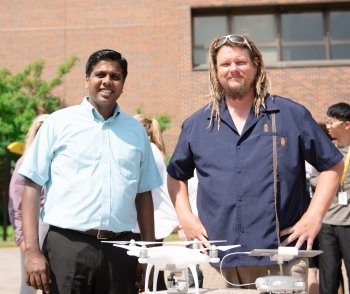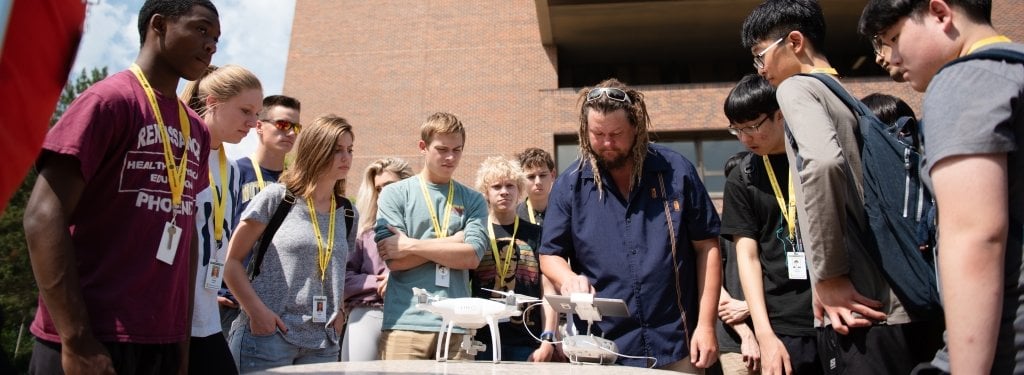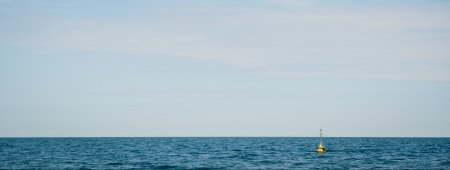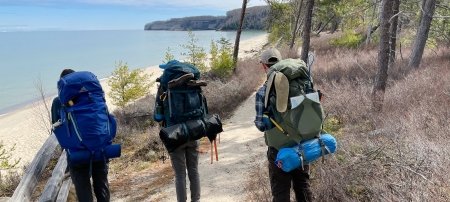Michigan Technological University researchers refine remotely sensed imagery processing framework to aid disaster relief.
Nearly 2,000 working satellites currently orbit the Earth, and about a third of them are engaged in observing and imaging our planet. The sheer volume of remote sensing imagery collected and transmitted to Earth’s surface daily is astounding.
How on earth are science and industry making sense of it all? Enter GEOBIA — Geographic Object-Based Image Analysis — a processing framework of machine-learning computer algorithms that automate the imagery data processing into a map useful for, say, identifying damage to urban areas following an earthquake.
The refinement of GEOBIA methods have engaged geoscientists, data scientists, geographic information systems (GIS) professionals and others for several decades. Among them are Michigan Tech doctoral candidate James Bialas, along with his faculty advisors, Thomas Oommen and Timothy Havens. The interdisciplinary team’s successful research to improve the speed and accuracy of GEOBIA’s classification phase is the topic of the article “Optimal segmentation of high spatial resolution images for the classification of buildings using random forests” recently published in the International Journal of Applied Earth Observation and Geoinformation.
The team’s research started with aerial imagery of the 2011 earthquake in Christchurch, New Zealand.
“The specific question we looked at was, how do we translate the information we get into labels that are coherent for an object-based image analysis?” Bialas said.

In use since the 1990s, GEOBIA is an object-based (as opposed to pixel-based), machine-learning method that results in more accurate classification of remotely sensed images. The method’s algorithms group adjacent pixels that share similar, user-defined characteristics, such as color or shape, in a process called segmentation. It’s similar to what our eyes (and brains) do to make sense of what we’re seeing when we look at a large image or scene.
In turn, these segmented groups of pixels are investigated by additional algorithms that determine if the group of pixels is, for example, a damaged building or an undamaged stretch of pavement, in a process known as classification.
“The big finding of this research is that, completely independent of the labeled data sets we used, our classification results stayed consistent across the different image segmentation levels,” Bialas said. “And more importantly, within a fairly large range of segmentation values, there was pretty much no impact on results. In the past several decades a lot of work has been done trying to figure out this optimum segmentation level of exactly how big to make the image objects.”
Grants & Funding
NSF Grant 1300720: “A Crowdsourced Knowledge Base for the Damage Assessment of Extreme Events”
One vital use of crowdsourced remotely sensed imagery is creating maps for first responders and disaster relief organizations. This faster, more accurate GEOBIA processing method can result in more timely disaster relief.
“As the GEOBIA problem becomes bigger and bigger — there are companies that are looking to image the entire planet earth per day — a massive amount of data is being collected,” Bialas said. “There may not be enough time to calculate the most perfect segmentation level, and you’ll just have to pick a segmentation level and hope it works.”
Michigan Technological University is an R1 public research university founded in 1885 in Houghton, and is home to nearly 7,500 students from more than 60 countries around the world. Consistently ranked among the best universities in the country for return on investment, Michigan's flagship technological university offers more than 185 undergraduate and graduate degree programs in science and technology, engineering, computing, forestry, business, health professions, humanities, mathematics, social sciences, and the arts. The rural campus is situated just miles from Lake Superior in Michigan's Upper Peninsula, offering year-round opportunities for outdoor adventure.






Comments